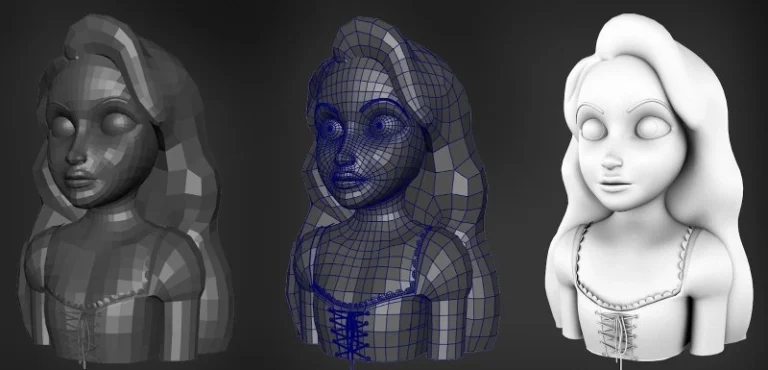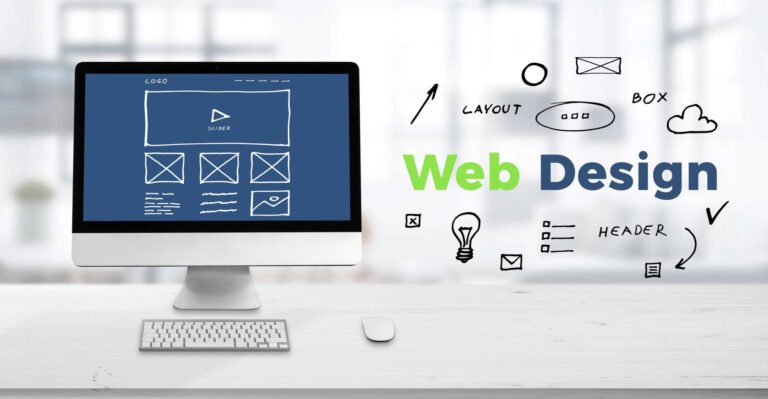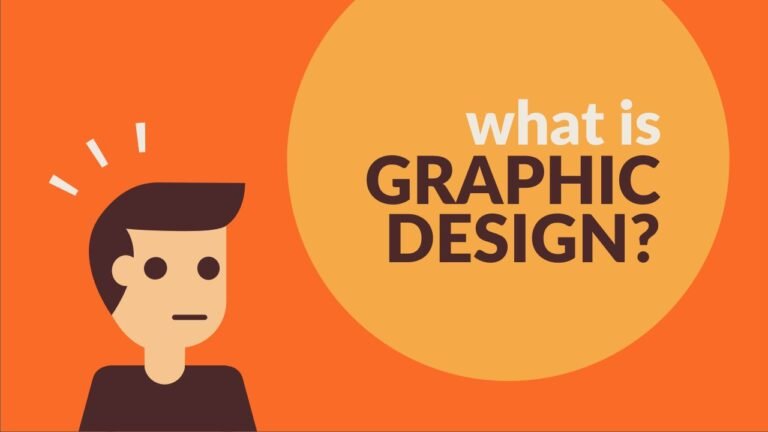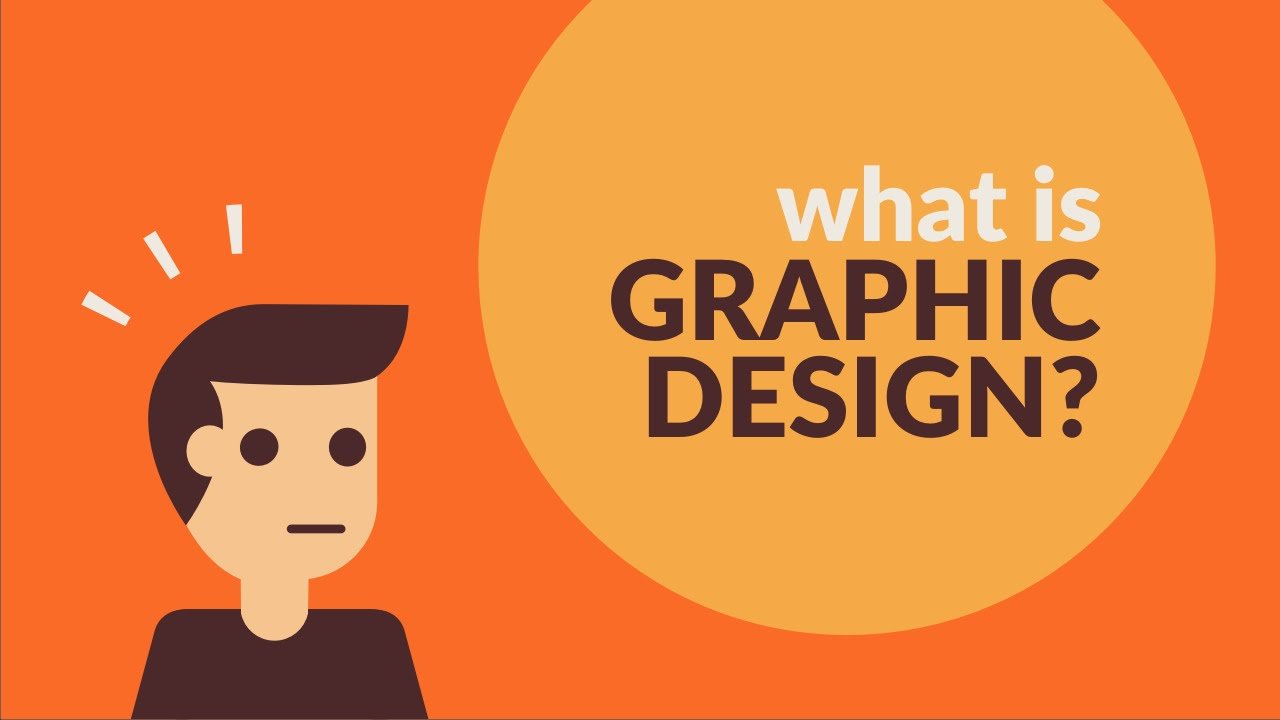Web design is the art and science of crafting visually appealing and user-friendly websites. It involves creating layouts, color schemes, typography choices, and interactive elements that cater to the needs and preferences of users. In the past, web design primarily revolved around optimizing websites for desktop browsers. However, with the proliferation of mobile devices in recent years, designers must consider how their creations will translate to smaller screens on smartphones and tablets. This shift towards responsive design has forced designers to think more creatively about how content is displayed across different devices while maintaining a seamless user experience. As technology evolves, web design will continue to adapt to meet users’ changing demands in an increasingly digital world.
What does a web designer do?
Web design plays a crucial role in defining a website’s or webpage’s objectives while ensuring accessibility for all users. A web designer is responsible for:
- Visual Appeal: Web designers craft visually pleasing websites.
- User-Friendly: They prioritize creating an intuitive and easy-to-navigate user experience.
- Layout Mastery: Responsible for the website’s layout, color scheme, and overall aesthetics.
- Responsiveness: Ensure websites work seamlessly on various devices and platforms.
- Collaboration: Work closely with clients and developers to bring visions to life.
- Design Acumen: Possesses a keen eye for design principles.
- Technical Skills: Strong technical proficiency in web design tools and technologies.
- Adaptability: Ability to understand and cater to the diverse needs of the target audience.
As an aspiring web creator, I have always been fascinated by web design. In today’s digital age, a website is often the first point of contact between a business and its potential customers. The design and functionality of a website can make or break a Company’s online presence. This article will take you behind the scenes of a high-paying and creative web design career.
Table of Contents
Web design vs. website development
Web designing involves the creative aspect of designing a website, including the layout, color scheme, typography, and overall visual elements. It focuses on creating a visually appealing and engaging user interface. On the other hand, web development focuses on the technical aspects, such as coding and programming, to bring the design to life. It involves writing the necessary code to make the website functional and interactive.
While web designing and development may seem separate entities, they are closely intertwined and work hand in hand to create a seamless user experience. A well-designed website with aesthetically pleasing visuals is only effective if backed by solid development. Similarly, a well-developed website may not have the desired impact if the design is lackluster. Therefore, both aspects are essential for creating a successful website.
Types of Web Design
A well-designed website not only creates a positive user experience but also helps in building credibility and trust. Let’s explore the different types in detail:
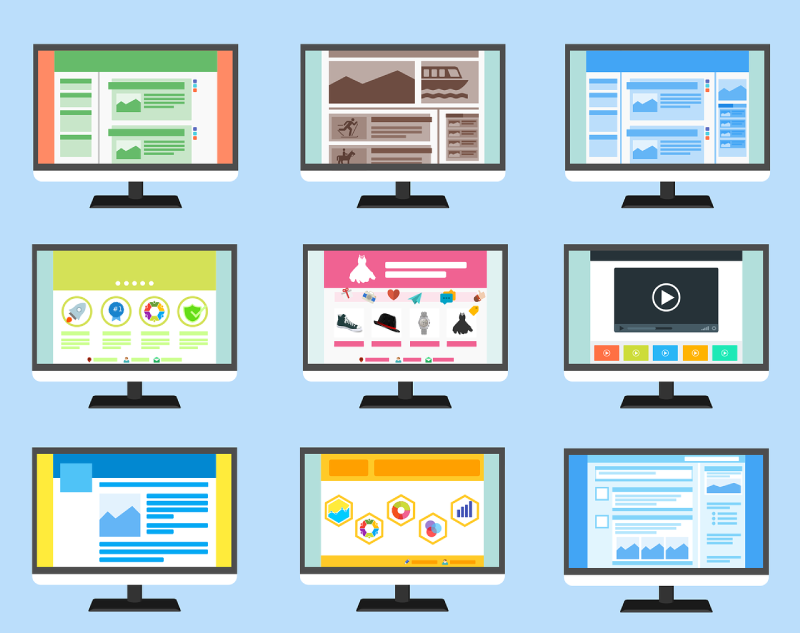
1. Responsive web design
The first type of web design we will discuss is responsive web design. With the rise in mobile usage, having a mobile-friendly website is crucial. Responsive web design ensures that your website adapts and looks great on any device, whether a desktop, tablet, or smartphone. One of the key elements of responsive design is fluid grids, which enable the website layout to adjust based on the screen size. The content, images, and overall design will automatically resize and rearrange to fit different screen resolutions. This flexibility not only improves user experience but also helps in maintaining consistent branding across devices.
Furthermore, responsive design plays a vital role in SEO. Google, the leading search engine, highly values mobile-friendly websites and considers them a ranking factor. A responsive website can improve your SEO rankings and increase visibility on search engine result pages. In conclusion, responsive design is essential for engaging users and improving SEO rankings. It ensures your website looks great on any device and provides a seamless browsing experience.
2. Adaptive web design
Another type of design that is worth mentioning is adaptive web design. While similar to responsive web design, adaptive web design takes a different approach to cater to other devices and screen sizes. Adaptive design involves creating multiple versions of a website, each designed specifically for a particular device or screen size. These different versions are then served based on the user’s device, providing a tailored experience.
Unlike responsive design, which fluidly adjusts the layout based on the screen size, adaptive web design relies on predefined layouts. This means the website will load a specific layout based on the device detection, ensuring the user gets the best possible experience. Adaptive design offers more control over the user experience, as each version can be optimized for specific devices. It allows for greater customization and faster loading times since only the necessary assets are served.
However, it’s worth noting that adaptive design can be more complex and time-consuming than responsive design. It requires creating multiple versions of the website and maintaining them separately. Additionally, it may not be as flexible as responsive web design when accommodating new devices or screen sizes. In conclusion, adaptive design offers a tailored experience for different devices and screen sizes. It provides greater control over the user experience but may require more resources to implement and maintain.
3. Single-page web design
Moving on to a different type of web design, let’s explore single-page web design. As the name suggests, single-page design involves creating a single website rather than multiple interconnected pages. This type of design is characterized by its simplicity and minimalism. It focuses on presenting all the necessary information and content on a single page, eliminating the need for users to navigate multiple pages. The content is often divided into sections, which can be accessed through scrolling or navigation links.
Single-page design offers several advantages. Firstly, it provides a seamless and uninterrupted user experience, as users can quickly scroll through the entire content without waiting for page loads. This can be particularly beneficial for mobile users with limited data or slower internet connections. Additionally, single-page web design allows for more creative and interactive storytelling. The content can be visually appealing and engaging, using animations, parallax effects, and interactive elements. This can help capture users’ attention and make a memorable impression.
However, single-page design may only be suitable for some websites. It works best for websites with limited content or those that aim to convey a specific message or story. Websites requiring complex navigation or extensive content may need to be better suited for this type of design. In conclusion, single-page web design offers a simple and seamless user experience. It allows for creative storytelling and can be particularly effective for websites with limited content.
4. Minimalistic web design
Next is a minimalistic web design focusing on simplicity and clean aesthetics. This type of design uses white space, limited color palettes, and minimalist elements to create a sleek and visually appealing website. The critical principle of minimalistic design is to remove unnecessary elements and focus on the essentials. This results in a clean and uncluttered design that allows the content to take center stage. By eliminating distractions, minimalistic design enhances the user’s focus and makes navigating and digesting the information more accessible.
Minimalistic design often uses typography and negative space to create visual interest. Large, bold typography can highlight essential messages or headlines, while negative space, also known as white space, helps develop a sense of balance and clarity. Regarding color palettes, minimalistic web design favors neutral or monochromatic schemes. This further enhances the simplicity and elegance of the design, allowing the content and visuals to stand out. Minimalistic web design is often associated with luxury brands, high-end products, and creative portfolios. It exudes sophistication and modernity, appealing to users who appreciate simplicity and elegance.
However, it’s essential to strike the right balance when implementing minimalistic design. Going too minimal can make the website appear complete while adding too many elements can defeat the purpose of minimalism. Finding the right balance and ensuring the design aligns with the brand’s identity. In conclusion, minimalistic design focuses on simplicity and clean aesthetics. It eliminates distractions and allows the content to shine. It is often associated with luxury brands and creative portfolios.
5. Flat web design
Another popular type of web design is flat web design. The flat design emerged as a reaction to skeuomorphism, which aimed to replicate real-world objects and textures in digital interfaces. On the other hand, flat design embraces simplicity and minimalism by using clean lines, bold colors, and simple shapes. One of the critical characteristics of flat web design is the absence of shadows, gradients, and three-dimensional effects. Instead, the design uses balanced colors and simple shapes to create a visually appealing and modern look. This results in a clean and minimalist design that is easy to understand and navigate.
Flat web design is often associated with user-friendly interfaces, focusing on clarity and simplicity. The absence of complex visual elements reduces cognitive load and makes it easier for users to interact with the website. Furthermore, flat web design can improve loading times and performance, requiring fewer graphical elements and effects than visually complex designs. This can particularly benefit mobile users or those with slower internet connections.
However, it’s important to note that flat design may only be suitable for some websites or brands. Some businesses may require a more detailed or realistic visual representation, mainly if they deal with physical products or services. When deciding on the design approach, it’s essential to consider the brand’s identity and target audience. In conclusion, flat web design embraces simplicity and minimalism. It focuses on clean lines, bold colors, and simple shapes to create visually appealing and user-friendly interfaces.
6. Material design
Material design is a design language developed by Google that combines the principles of flat design with subtle animations and dynamic elements. It aims to create a sense of realism and tactile interaction in digital interfaces. Material design is characterized by using layers, shadows, and smooth transitions. It emphasizes the interaction between elements, creating a sense of depth and hierarchy. This helps users understand the relationship between elements and enhances the overall user experience.
One of the critical advantages of material design is its versatility. It can be applied to various platforms and devices, including websites, mobile apps, and desktop applications. This allows for a consistent and cohesive user experience across different devices and screen sizes. Material design also offers a wide range of predefined components and guidelines, making it easier for designers and developers to create visually appealing and functional interfaces. Using animations and transitions adds interactivity and engagement, making the user experience more enjoyable.
Furthermore, material design aligns with Google’s guidelines for SEO, as it emphasizes user experience and mobile-friendliness. Implementing secular design principles can improve your website’s performance and SEO rankings. In conclusion, material design combines the principles of flat design with subtle animations and dynamic elements. It creates a sense of realism and enhances the user experience.
7. Parallax scrolling web design
Lastly, let’s explore parallax scrolling design. This design technique creates a layered effect as users scroll through a website, resulting in a visually engaging and interactive experience. Parallax scrolling involves moving different web page elements at different speeds, creating an illusion of depth and dimension. This can be achieved by animating background images, foreground elements, or entire content sections.
Parallax scrolling can captivate users’ attention and encourage them to explore the website further. It adds interactivity and engagement, as users can control the scrolling speed and direction. This creates a more immersive and memorable user experience. Furthermore, parallax scrolling can guide users’ attention and highlight important content or messages. By strategically animating certain elements, designers can draw the user’s focus and communicate essential information effectively.
However, it’s essential to use parallax scrolling judiciously and consider its impact on usability and performance. Excessive parallax scrolling can be overwhelming or distracting for users, mainly if it affects the website’s loading times or navigation. In conclusion, parallax scrolling web design creates a layered effect and enhances user engagement. It adds interactivity and captivates users’ attention, but should be used judiciously to ensure a positive user experience.
Skills Required for Web Design
Web design is a versatile field demanding a blend of technical and creative prowess. The following skills are required:
- Technical Proficiency: Solid understanding of HTML, CSS, and JavaScript – the foundations of web development.
- Design Software Mastery: Proficient in using design tools such as Adobe Photoshop and Illustrator.
- UX Design Principles: Knowledge of user experience (UX) design for creating aesthetically pleasing and functional websites.
- Responsive Design: Ability to implement responsive design for optimal user experience across devices.
- Communication Skills: Strong communication skills are crucial for collaboration with clients and developers.
- Problem-Solving Abilities: Aptitude for creative problem-solving in the web design process.
Web design Tools and Software
Web designers need specialized tools for creating and designing websites. The selection of tools depends on project requirements and the stage of development. Some tools and software used by web designers are:
- Adobe Creative Suite: Industry-standard graphics, image editing, and layout design software.
- Figma and Sketch: Online design platforms facilitating real-time collaboration and streamlined workflows.
- Code Editors: Utilizing tools like Sublime Text and Visual Studio Code for writing and editing HTML, CSS, and JavaScript code.
- Content Management Systems (CMS): WordPress and Drupal are popular CMS choices for building and managing websites.
Web designers leverage these tools to ensure efficiency, creativity, and seamless collaboration in the website development process.
Web design Elements
In web design, every element plays a crucial role in attracting and engaging users. Attention to detail and thoughtful planning are essential when creating an aesthetically pleasing and functional website. By incorporating these elements effectively, you can communicate your brand’s message, increase conversions, and create a memorable user experience.
1. Visual Hierarchy
One of the fundamental principles of web design is visual hierarchy. It involves arranging elements on a page to guide the user’s attention and make the content easy to comprehend. A well-executed visual hierarchy helps users navigate the website and find the necessary information. Designers use various techniques such as size, color, and contrast to establish a solid visual hierarchy. By strategically placing essential elements, such as headlines and calls to action, designers can draw attention to specific website areas and create a clear flow of information.
2. Color Theory
Color has a profound impact on how users perceive a website. It evokes emotions, creates associations, and influences user behavior. Understanding color theory is crucial for web designers to effectively communicate the brand’s personality and convey the desired message. Color palettes should be carefully chosen to reflect the brand’s values and appeal to the target audience. Harmonious color combinations can create a sense of balance and harmony while contrasting colors can draw attention to specific elements. Additionally, designers should consider the psychological effects of different colors to create the desired user experience.
3. Typography
Typography plays a crucial role in web design, as it affects a website’s readability and overall visual appeal. Choosing the right fonts and typography styles can enhance the brand’s identity, establish hierarchy, and improve the user experience. When selecting fonts, designers should consider legibility, readability, and appropriateness for the brand. They should also consider font sizes, spacing, and lengths to ensure optimal reading experience across different devices. Designers can create a visually appealing and engaging website by combining different font styles.
4. Navigation Design
Navigation is vital to web design, as it determines how users explore and interact with a website. An intuitive and user-friendly navigation system can significantly improve the user experience and encourage visitors to stay longer on the site. Clear navigation menus, organized categories, and breadcrumbs are common elements that guide users through the website’s content. Designers should ensure that navigation is consistent across all pages and easily accessible from any part of the site. By simplifying the navigation process, designers can help users find what they’re looking for quickly and effortlessly.
5. Responsive Design
In today’s digital landscape, responsive design is no longer an option but a necessity. With the increasing use of mobile devices, websites must adapt to different screen sizes and resolutions. Responsive design allows websites to adjust their layout and content to provide an optimal viewing experience across various devices. A responsive website improves user experience and plays a crucial role in search engine optimization (SEO). Search engines prioritize mobile-friendly websites, making responsive design essential for improving organic rankings. By implementing responsive design, designers can ensure their websites are accessible and visually appealing on all devices.
6. User Experience (UX) Design
User experience (UX) design focuses on creating a seamless and enjoyable experience for website visitors. It involves understanding user behavior, conducting usability testing, and optimizing the website’s design and functionality to meet user needs. UX designers aim to make the user journey as smooth as possible, from when users land on the website to completing desired actions, such as making a purchase or filling out a form. By incorporating user feedback and constantly iterating on the design, UX designers can create intuitive, engaging, and conversion-focused websites.
7. Call to Action (CTA)
A call to action (CTA) is a crucial element for driving conversions on a website. Whether signing up for a newsletter, purchasing, or contacting the business, a well-designed CTA can significantly impact user behavior. CTAs should be strategically placed, visually appealing, and communicate the desired action. Designers can use color, size, and contrast to make CTAs stand out from the rest of the content. Additionally, the language used in CTAs should be concise and persuasive and encourage users to take immediate action.
Web Designer Salary
Web design offers lucrative career opportunities, with an average annual salary of approximately $75,000, subject to variations based on experience, location, and Company size. Specializations in e-commerce or mobile app design can command even higher salaries. The demand for skilled web designers is poised to surge, reflecting the growing recognition of businesses for a robust online presence.
Conclusion
Web design is a dynamic and rewarding career that offers creativity and a high earning potential. As explored in this article, web designers play a crucial role in creating visually stunning and user-friendly websites. They possess unique technical skills and artistic talent to bring their client’s visions to life. With the growing demand for web designers and the continuous evolution of technology, this field offers exciting opportunities for those passionate about creating compelling online experiences.
Whether you are a business owner needing a website or an aspiring web designer looking to carve out a successful career, the world of web design is full of possibilities. So, take the first step towards your web design journey and explore the potential of this high-paying creative career.
Are you ready to take your online presence to the next level? Contact us today to discuss your web design needs and let our talented web designers bring your vision to life.


